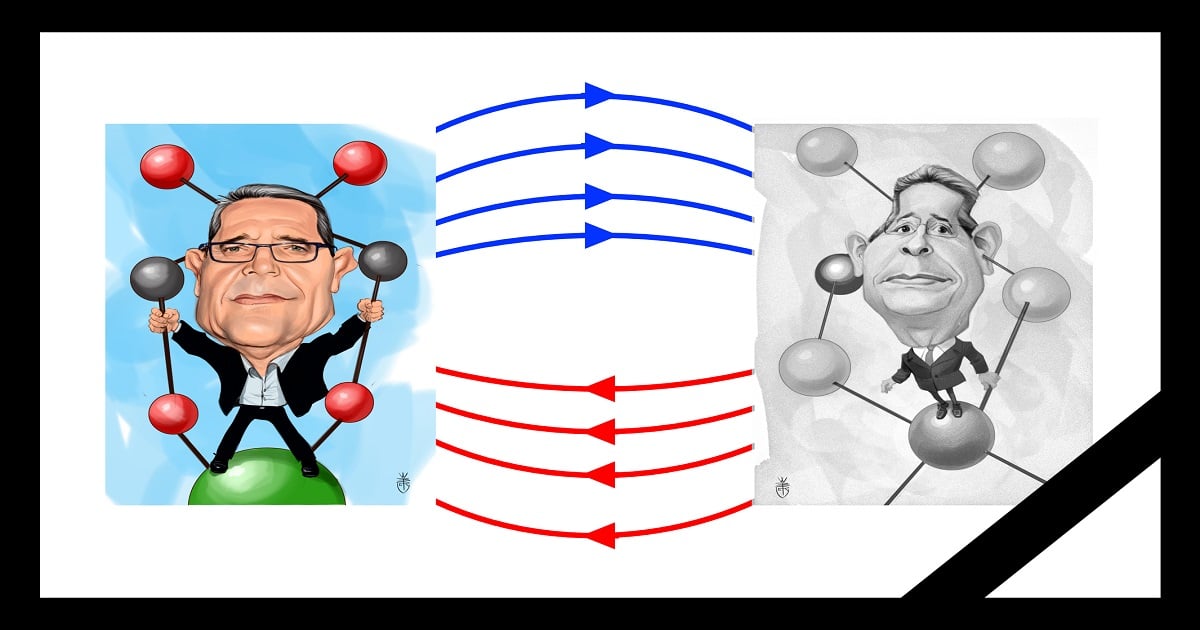- 2.5Impact Factor
- 4.6CiteScore
- 17 daysTime to First Decision
Magnetic Coordination Compounds and More... a Long and Successful Story: A Tribute to M. Julve and F. Lloret
Special Issue Information
Dear Friends and Colleagues,
It is with great sadness that we inform you that Miguel passed away on Tuesday, July 9, 2024. This is an immense loss for his family as well as for all of us. Miguel, a distinguished faculty member of the Department of Inorganic Chemistry at the University of Valencia, was loved and respected throughout the research community. Though we will all miss our great friend and colleague, we can take comfort in the fact that he went peacefully.
Requiescat in peace, Miguel
Carlos Gomez and Salah-Eddine Stiriba
As you may know, our friends and colleagues Prof. Miguel Julve and Prof. Francesc Lloret, from the Universidad de Valencia, will be retired (never completely, of course) this academic year 2023/24.
To pay tribute to their long and fruitful scientific careers, we have decided to edit a Special Issue (to appear also as a printed volume) in the journal Magnetochemistry entitled “Magnetic Coordination Compounds and more... a long and successful story: A Tribute to M. Julve and F. Lloret” and we would like to invite you to send a contribution in the form of reviews, mini-reviews, feature articles or original research article for this Special Issue.
Although you can send a contribution at your convenience, we propose an initial deadline of 1 November 2024, to have the Special Issue ready by the end of 2024, the year of their (partial) retirement.
If you are interested in sending a contribution, please send us a tentative title and the type of contribution you would like to submit for this Magnetochemistry Special Issue.
We count with your valuable contribution to pay tribute to the scientific and personal career of our friends Miguel and Paco.
Prof. Dr. Carlos J. Gómez García
Prof. Dr. Salah-Eddine Stiriba
Guest Editors
Manuscript Submission Information
Manuscripts should be submitted online at www.mdpi.com by registering and logging in to this website. Once you are registered, click here to go to the submission form. Manuscripts can be submitted until the deadline. All submissions that pass pre-check are peer-reviewed. Accepted papers will be published continuously in the journal (as soon as accepted) and will be listed together on the special issue website. Research articles, review articles as well as short communications are invited. For planned papers, a title and short abstract (about 250 words) can be sent to the Editorial Office for assessment.
Submitted manuscripts should not have been published previously, nor be under consideration for publication elsewhere (except conference proceedings papers). All manuscripts are thoroughly refereed through a single-blind peer-review process. A guide for authors and other relevant information for submission of manuscripts is available on the Instructions for Authors page. Magnetochemistry is an international peer-reviewed open access monthly journal published by MDPI.
Please visit the Instructions for Authors page before submitting a manuscript. The Article Processing Charge (APC) for publication in this open access journal is 2200 CHF (Swiss Francs). Submitted papers should be well formatted and use good English. Authors may use MDPI's English editing service prior to publication or during author revisions.
Keywords
- coordination chemistry
- magnetochemistry
- magnetic properties
- single-molecule magnets
- magnetic metal–organic frameworks

Benefits of Publishing in a Special Issue
- Ease of navigation: Grouping papers by topic helps scholars navigate broad scope journals more efficiently.
- Greater discoverability: Special Issues support the reach and impact of scientific research. Articles in Special Issues are more discoverable and cited more frequently.
- Expansion of research network: Special Issues facilitate connections among authors, fostering scientific collaborations.
- External promotion: Articles in Special Issues are often promoted through the journal's social media, increasing their visibility.
- e-Book format: Special Issues with more than 10 articles can be published as dedicated e-books, ensuring wide and rapid dissemination.

